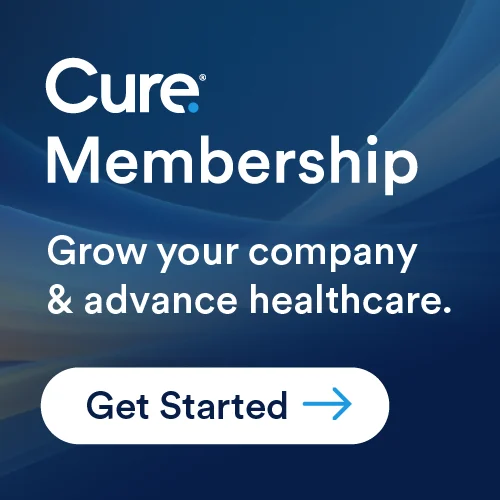
Overview
Finding the right participants is often an expensive bottleneck for clinical trials.
Clinical Trial Guide shares how to clinical trials can improve enrollment
Finding the right participants is often an expensive bottleneck for clinical trials sponsors and a frustration for patients. About 80 percent of trials miss enrollment deadlines, with related study delays and increased costs.[i] Yet, faster enrollment could mean more efficient drug or device development and, for successful treatments, faster access for the patients who need them.
To speed recruitment, David Polinsky, JD, and Rivka Szafranski, MS, created the Clinical Trial Guide to connect patients with the clinical trials most appropriate for their needs. The free site introduces patients to the trial process, helps them learn if they qualify for specific studies, and addresses frequent concerns and questions. The site is designed to address five common challenges to finding and enrolling trial participants.
Challenge #1: The Information Available is Too Technical for Lay People
Treatment developers are required to post information about their clinical trials on ClinicalTrials.Gov. While this database is very comprehensive, it is highly industry-focused and features content beyond the ability of most readers to understand — particularly the eligibility criteria.
"When it comes to trying to find a clinical trial, there really isn't information out there that is tailored to potential patients who want to find information on their own, in plain language," said Polinsky, Founder of the Clinical Trial Guide.
The site aims to remedy that problem by presenting information on studies using terms patients are most likely to understand and in a way that is easy to find. "When they are looking for a clinical trial, the first place people will go is Google. Our goal is for them to end up on our site, where they can get the basic information they need," said Szafranski, Co-Founder and CEO of the Clinical Trial Guide. "We want the average person to understand the clinical trials process and have the resources they need to find the right treatment options."
Challenge #2: Clinical Trial Populations Should be More Diverse
More and more clinical trials are seeking to enroll a diversity of patients to see how a new therapy works in people from different backgrounds. They also want to achieve more equity among patients in accessing treatments offered by clinical trials.
"Diversity, equity, and inclusion are important because pharmaceutical companies want to get a cross representation of patients. Drugs can affect patients in different ways depending on their different genetic makeups," said Polinsky. One way Clinical Trial Guide hopes to promote diverse clinical trial recruitment and attract people from different backgrounds is by presenting information in multiple languages.
Challenge #3: More Patients are Needed Than Ever Before
The number of clinical trials open to enrolling patients has ballooned dramatically during the last two decades, growing from just 4,000 protocols in 2000 to more than 134,000 in 2023 — half of which target some form of cancer.
"We've had this massive growth in the clinical trials space over the last 20 years. It has created a behemoth of a problem with recruitment and enrollment," explained Szafranski. "Companies are scrambling to get enough patients, and patients are scrambling to find the trials they think could be lifesaving. They just don't know how to connect with each other, and it's become a struggle."
Clinical Trial Guide is building a tool called Trial Connect to link pharmaceutical companies and CROs with patients seeking their protocols. "We're going to aid the communications process by giving patients the ability to put themselves out there and say, 'I'm looking for this type of study,'" noted Polinsky. "They will then be provided with resources for applicable studies so they know what's potentially available to them. We'll also connect them directly with the organizations running the studies or direct them to clinical trials’ sites."
Challenge #4: The Cost of Recruitment is Exorbitant
The average cost of recruiting a single patient into a clinical trial is $7,000. "And that's just the average," noted Szafranski. "It is not abnormal for pharmaceutical companies to pay a quarter of a million dollars to recruit a patient for a rare disease study."
Creating a platform to facilitate connections between patients and organizations seeking to enroll them as clinical trial participants could efficiently reduce recruitment costs.
Challenge #5: It's Difficult to Connect with a Human Being
Even when a patient finds a clinical trial that might be appropriate, it can be a hurdle to connect with an individual to ask questions about the study and how to enroll. In many cases, trial coordinators do not have the manpower to respond.
"I think clinical trial sites are inundated with all that they have to do, and it's just impossible for them to respond directly to every patient," explained Szafranski. "As a result, patients frequently give up on the idea of a clinical trial because the access is just not there."
Clinical Trial Guide hopes to overcome that barrier through its model. The founders noted that while artificial intelligence may help translate complex clinical trial terms into plain language, they want to remain true to their mission: connecting patients with the people running the studies that could save their lives.
Szafranski stated, "Patients and family members have told us that one of the largest hindrances to enrolling in clinical trials is simply not being able to reach another person at the other end of the line. I think we will definitely be incorporating AI, but we need to be cautious about it to make sure it doesn't completely remove the human element of what we plan to accomplish."
[i] Brøgger-Mikkelsen M, Ali Z, Zibert JR, Andersen AD, Thomsen SF. Online Patient Recruitment in Clinical Trials: Systematic Review and Meta-Analysis. J Med Internet Res. 2020;22(11):e22179. Published 2020 Nov 4. doi:10.2196/22179.








